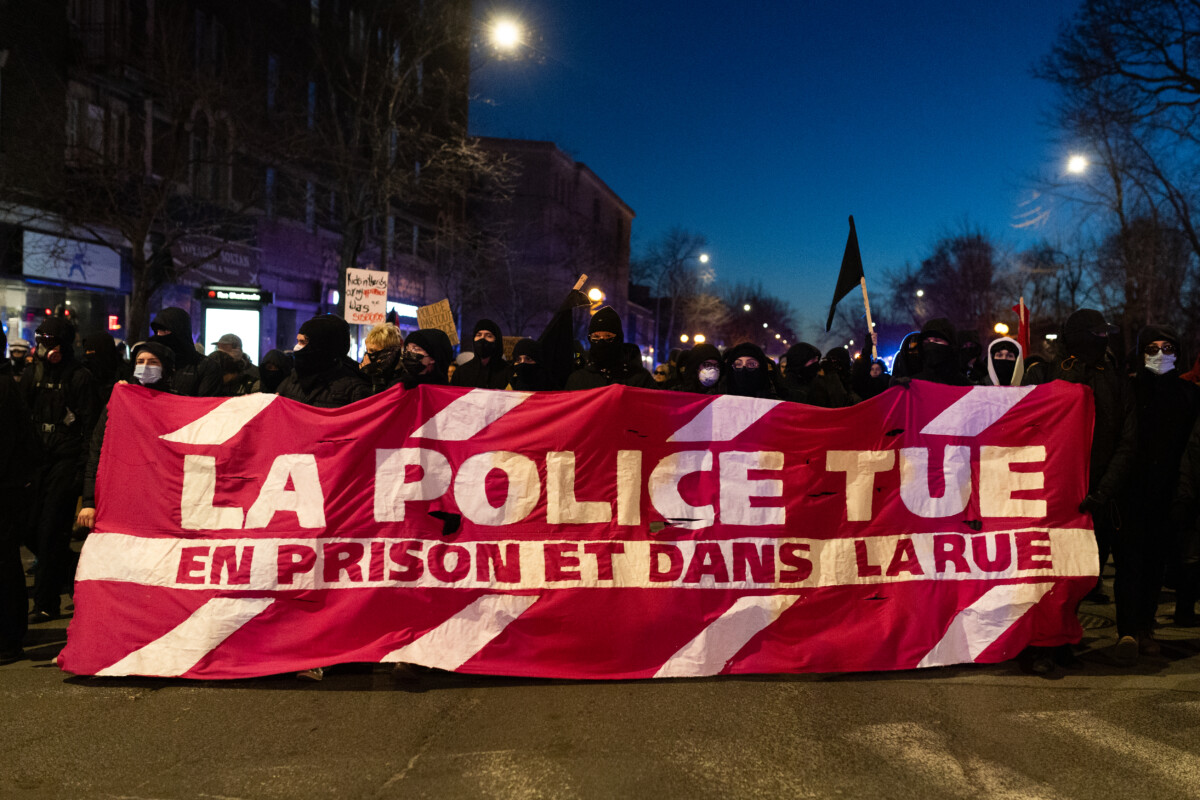The International Day Against Police Brutality protest highlighted concerns about police accountability and mistreatment of detainees
On March 10, the Center for Research-Action on Race Relations hosted an event in Montreal’s Little Burgundy neighbourhood to gather victims of crime, city officials, and community groups to discuss crime prevention. The event began with organizers acknowledging the pain and suffering felt by attendees in the room and hoping that they could start a conversation on how to overcome violence in the area.
On March 15, the International Day Against Police Brutality, over 100 demonstrators marched through the streets of NDG to protest police brutality. The protest aimed to highlight brutality throughout the justice system, not just among police officers. Demonstrators demanded accountability for the individuals responsible for upholding systemic racism.
The demonstration was organized by the Collectif opposé à la brutalité policière (COBP), who founded International Day Against Police Brutality in 1997.
The protest also highlighted the case of Nicous D’Andre Spring, a 21-year-old Black man who died during an altercation with police while illegally detained at Bordeaux prison. Quebec’s chief coroner has ordered a public inquiry into Spring’s death, and provincial police opened a criminal investigation into the incident, which resulted in the suspension of a correctional officer and a supervisor.
Alain Babineau, director of The Red Coalition, a group in Montreal that advocates for social justice issues, shared his perspective on the progress made in addressing racial profiling and police brutality. “Protests are good, but there has to be some type of objective behind it. They raise awareness, but it has to be sustained. Otherwise, the powers that be, the politicians, go along with the popular [sentiment]. If they see there is merit in supporting your claim or what it is that you’re pushing forward, then they’ll go along with it.”
Babineau stressed the importance of treating people with respect and dignity, rather than just focusing on reconciliation efforts.
Earlier this year, the Quebec Police Ethics Committee ruled that two Montreal police officers, Dominique Gagné and Mathieu Paré, knowingly omitted key information about David Tshiteya Kalubi’s medical condition before his death in their custody in 2017. The officers failed to document Kalubi’s sickle cell anemia on the inmate control sheet, a condition he took medication for. The committee found the officers’ omission amounted to negligent and careless behaviour.
However, the Quebec Crown Prosecutor’s Office decided not to charge anyone in connection with Kalubi’s death. The case has raised questions about police accountability and the treatment of Black individuals in police custody.
Quebec’s Crown Prosecutor’s Office has announced that the police officers who shot and killed Jean René Junior Olivier in Repentigny in August 2021 will not face criminal charges. The Crown’s decision was based on an analysis of evidence, including video footage from one of the paramedics at the scene. The incident sparked outrage in Repentigny’s Black community against racial profiling by law enforcement.
The march served as a reminder that the fight against police brutality is ongoing and that it is the responsibility of everyone to demand justice and accountability from “les brutes en uniformes,” as one masked organizer called police. The COBP and other organizations have been fighting for decades to end racial profiling and violence by law enforcement, and they vow to continue until significant changes are made.
Babineau highlighted the need for sustained activism to bring about real change.
“Apologies are apologies are apologies,” he said. “If it sort of atoned for evil that you did, great. It’s not a licence for the things you’re about to do.”
